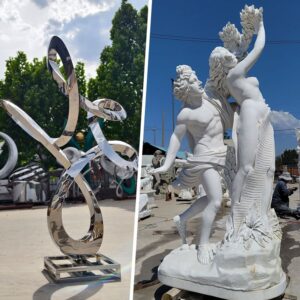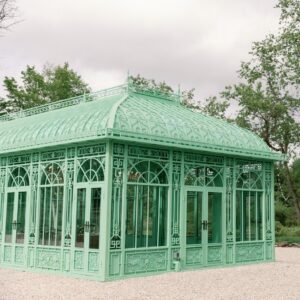Want a sculpture for your garden – but don’t want a Greek warrior, don’t want a hyper-modern stainless “twist”, and don’t want something that looks outdated in five years?
Mid-Century modern sculptures are the quiet answer high-end designers use: warm, abstract, proportional, and extremely compatible with today’s architecture and planting palettes.
This practical guide walks you from aesthetics to placement, to material longevity, to supplier decisions – so you can choose with confidence instead of by guesswork.
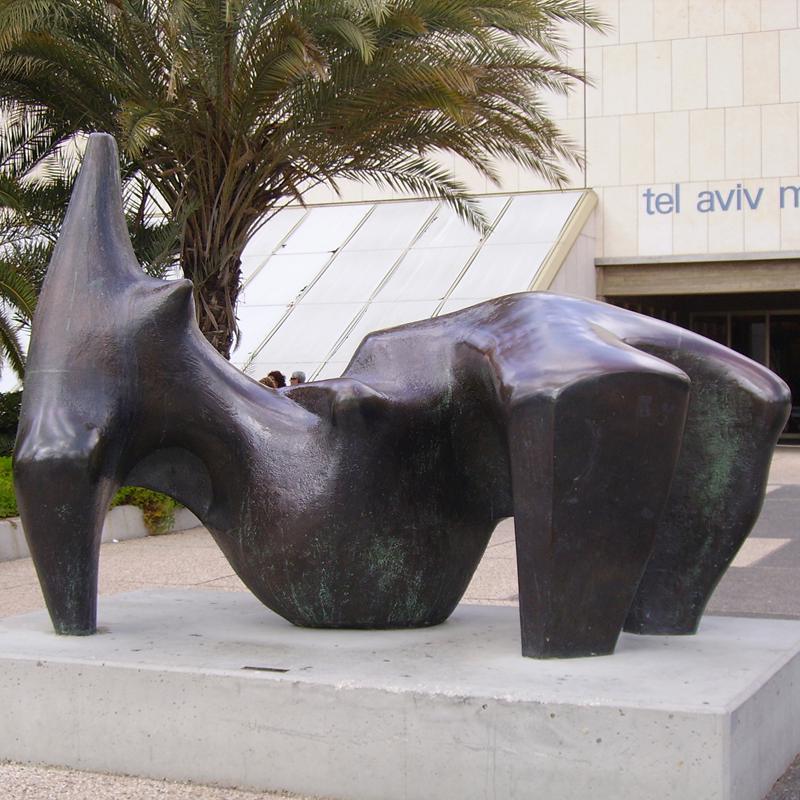
Visual DNA of Mid-Century Modern Sculpture
1. Form –Soft Geometry, Reduced but Not Rigid
Mid-Century Modern sculpture rejects literal figures and rejects aggressiveness. Its forms are abstract but gentle: rounded edges, stretched ellipses, looping ribbons, simplified human torsos, spheres resting on plinths. Instead of describing a subject, it suggests a mass relationship – how volumes sit, lean, float, or cut through space. This “white space” form is designed to allow sculptures to coexist with architecture, plants, light and shadow, rather than stealing the show.
2. Material & Surface –Warm Metals, Honest Texture
Typical materials are bronze, weathering steel, and marble, rather than mirrored stainless steel or spray-painted colors. Surfaces are often matte, slightly oxidized, and bear traces of handicraft, without any hint of industrial luster.
Why? Because Mid-Century opposes “technical flair” and champions material reality – letting materials interact with their environment in their true nature, rather than applying makeup.
3.Philosophy– Calm & Continuity Rather Than Narrative
- Classical asks: “What story does it tell?”
- Contemporary asks: “What statement does it make?”
- Mid-Century simply asks: “Does it stay timeless?”
It doesn’t explain, provoke, or constrain your understanding. Instead, it achieves endurance through proportion, rhythm, weight, and silence. Precisely because it lacks narrative, it never becomes outdated, nor does it clash with the garden’s style.
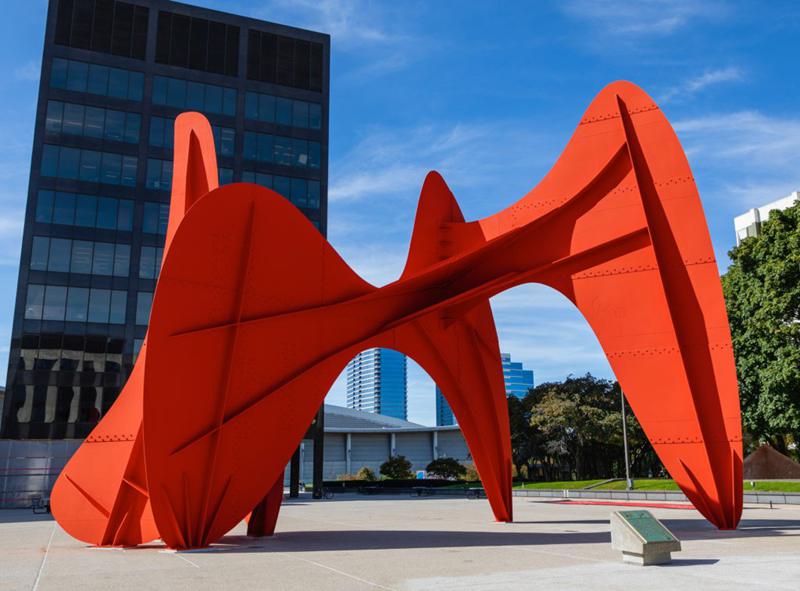
Where to Place Them Outdoors
1. At a Distance, Not Up Close
Mid-Century sculpture is meant to be seen rather than observed. Ideally, it should be placed at the end of the visual axis—at the end of a walkway, across a lawn, or outside a terrace—rather than at one’s feet. The sculpture’s quiet power is realized when the viewer is forced to “look toward” rather than “look down.”
2. Counterweight to Soft Landscapes
The natural world of the garden is fluid and soft; sculpture serves as a stable counterpoint.
- Placing a stable geometric object against a large area of ornamental grass
- Placing a pure surface behind a loose shrubbery
- The effect is not “decorative,” but rather compositional balance.
3. Anchor Transitions
Placing sculptures at path turns, stairways, porch exits, and where the pool meets the lawn can punctuate the rhythm of the space. Without saying anything, it tells your body how to move.
4. Near Water or Glass and Amplify Volume with Reflection
Mid-Century modern sculpture has a simple form. When it encounters water or architectural glass, the reflection doubles its volume, intensifying the sense of tranquility.
Suitable for waterfronts, poolsides, near floor-to-ceiling windows, or in front of landscape mirrored walls. This is a cost-effective way to create a sense of presence through optics rather than volume.
5. Avoid Clutter –Let It Be Alone
Don’t place more than two abstract sculptures in the same field of view. Two abstracts in one frame will start competing, diminishing the overall composition. For Mid-Century modern sculpture, white space isn’t a waste; it’s a prerequisite.
Quick Rules You Can Copy
- A good location is one that’s visible but inaccessible.
- Place sculptures where there are many plants, but avoid them where there are many hardscapes.
- Behind the sculptures, leave space either empty or pure to avoid a cluttered background.
- Don’t use lights that hit the face; use low-level wall washes or side lights to create volume.
- Place only one piece in a location, making it feel like a period in a sentence, not a comma.
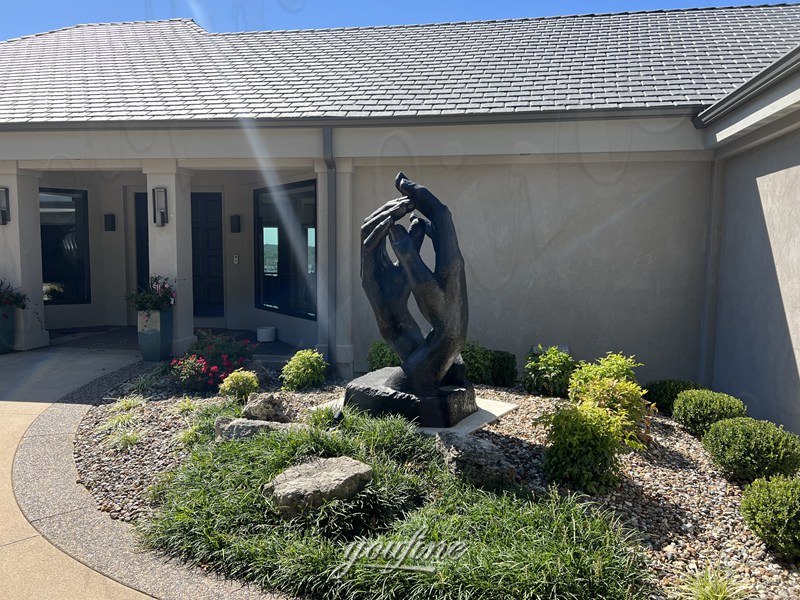
Materials & Finishes for Outdoor Longevity
Bronze / Corten / Marble are Safe Classics
Bronze
- Outdoor Performance: Coexists with oxidation, with a stable, deepening color.
- Judgment Criteria: Sufficient weight, no hollows, fully polished welds, and evenly applied wax or oil seals.
Marble
- Outdoor Performance: Structurally stable, with a strong visual sense of age.
- Judgment Criteria: Avoid large-scale patching and tiling; prioritize single-piece cutting or carving.
Corten Steel
- Outdoor Performance: A dense protective oxide layer forms on the surface, and the rust color stabilizes and does not spread.
- Judgment Criteria: A secondary natural curing period is required before shipment to avoid shipment with live rust.
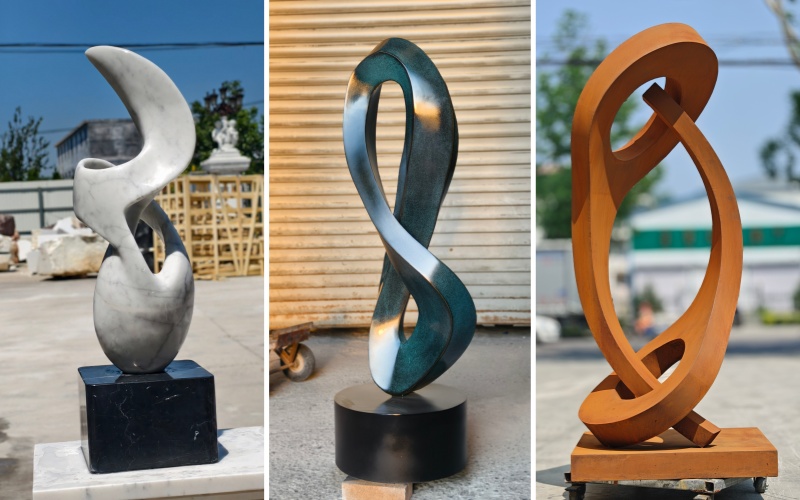
Not Recommended unless Indoors or Low Exposure
Outdoor is not a controlled environment – don’t ask materials to do what they physically can’t.
- Mirror Stainless / Mirror Titanium: Scratches and water marks are inevitable outdoors.
- Painted Steel: UV damage and edge peeling are a matter of time.
- Composite / Resin: Thermal expansion and contraction, as well as aging and tearing, are inevitable.
Surface Treatment Rules
- Bronze – Must have a uniform patina + wax/oil sealant
- Steel – For outdoor use, a corrosion-resistant primer must be applied, not just a direct coat of paint
- Stone – Avoid glossy polish; a matte finish is more resistant to age and stains
- Welded Components – All welds must be polished flush and sealed with a corrosion-resistant sealant; no exposed welds are permitted
(Reliable suppliers in the market typically complete final stabilization before delivery, rather than passing the “maintenance cost” on to the buyer.)
Thumb Rules You Can Treat as Law
- The brighter something is, the more fragile it is; the duller it is, the more durable it is.
- Stability based on its own material is more reliable than stability based on a coating.
- Aging is inevitable in the outdoors, but degradation is unacceptable.
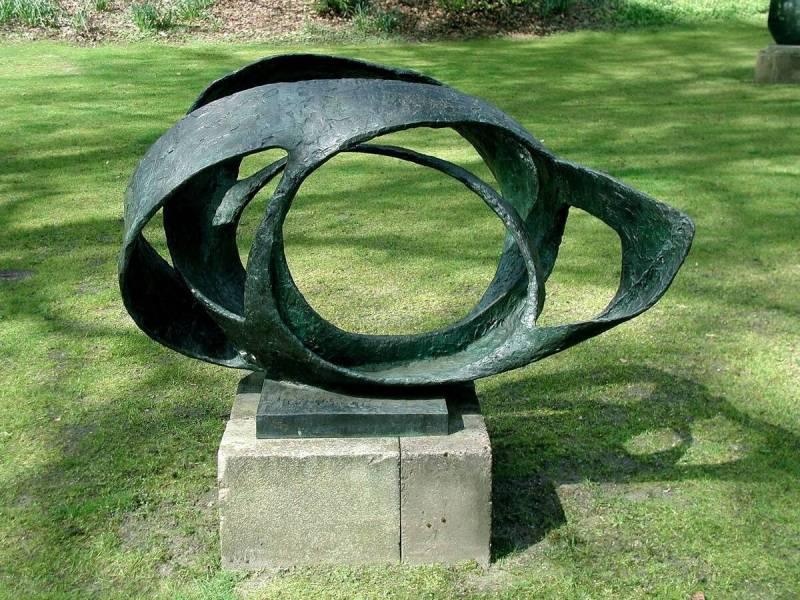
Scale Rules for Outdoor Spaces
Choosing the size of a sculpture isn’t just about “looking big”; it’s about balancing proportions with the surroundings, visual distance, and overall volume. Here’s a straightforward decision-making method, along with several common use cases.
Space Type | Recommended Sculpture Height | Reason |
Small Garden / Courtyard (<100㎡) | Up to 1/3 of average eye level | Avoid dominating the view; maintain a sense of openness |
Medium Garden / Terrace (100–300㎡) | Up to 1/2 of average eye level | Create a focal point without overwhelming the space |
Large Garden / Public Area (>300㎡) | At or slightly above eye level | Enhance spatial layers; provide a visual anchor |
1. Horizontal Volumes Harmonize with Hardscape
Narrow gardens – Vertically stretched sculptures are more harmonious
Wide lawns – Round or blocky shapes help balance the sense of spaciousness
Dense trees – Small or low-lying structures avoid “burying” the space
2. Viewing Distance Formula
Minimum viewing distance ≈ sculpture height × 3
Maximum viewing distance ≈ sculpture height × 10
For example: A 2-meter-tall sculpture has an ideal viewing distance of approximately 6 – 20 meters. This ensures that the sculpture’s form remains clearly visible while not appearing too small to be noticeable.
Quick Decision-Making Tips
- Measure the space first, then the sculpture height.
- Use small sculptures for small features, taller sculptures for larger spaces.
- Pay attention to the visual distance ratio, maintaining a 3–10x rule.
- Remember to contrast the horizontal volume with the surroundings to create visual balance.
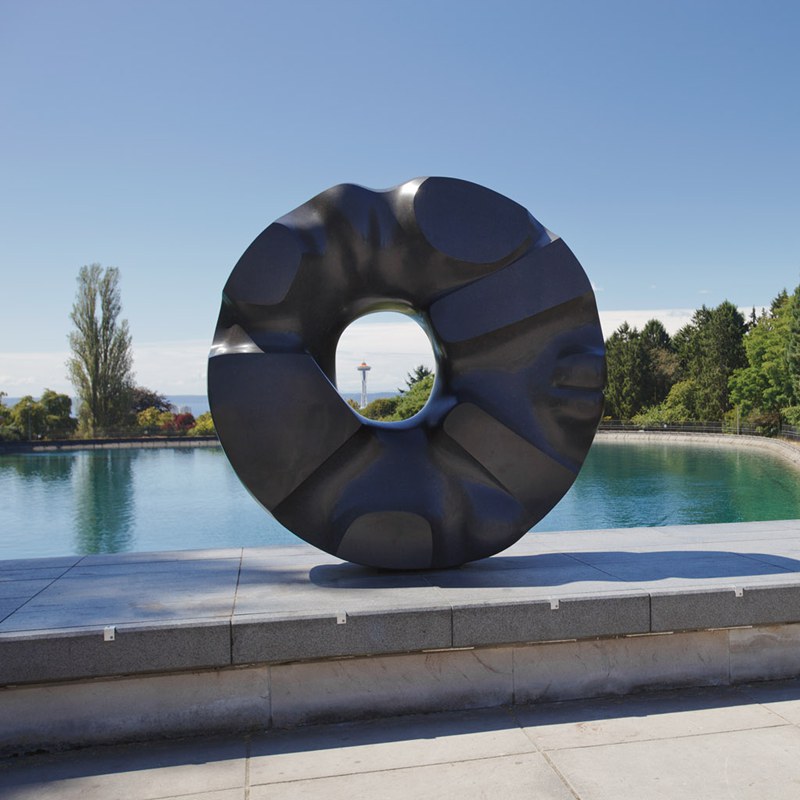
Famous Mid-Century Modern Sculptures
Mid-Century modern sculpture blends abstraction with timeless simplicity. Here are some iconic examples, with a brief design analysis for each:
Sculpture | Artist | Year | Material | Why It Matters |
Bird in Space | Constantin Brâncuși | 1923–1940 | Bronze | A sleek, elongated form capturing motion and elegance; minimalism at its peak. Ideal inspiration for garden sculptures emphasizing verticality. |
Large Torso | Henry Moore | 1950s | Bronze | Abstracted human form with smooth voids; balances mass and negative space. Works well as a visual anchor in lawns or terraces. |
Winged Figure | Barbara Hepworth | 1950s | Stone | Organic forms with flowing curves; shows harmony with landscape and softens hard lines. Great for border planting areas. |
Reclining Figure | Jean Arp | 1930s | Bronze | Simplified, flowing shapes that suggest human posture without literal depiction; perfect for informal garden corners. |
Abstract Cube | Donald Judd | 1960s | Painted Metal / Steel | Minimal geometric repetition emphasizing material honesty; ideal for contemporary gardens with structured layouts. |
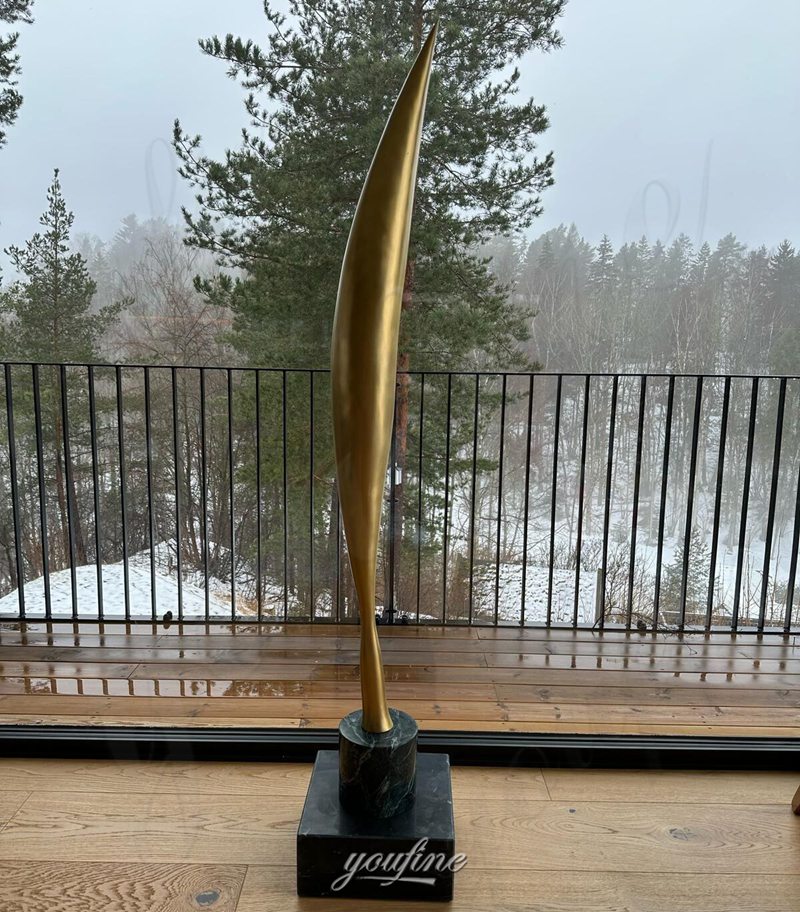
Choose Supplier for Commission or Replica
Selecting the right supplier is as critical as choosing the sculpture itself. A reliable partner ensures that your Mid-Century Modern piece maintains proportion, material integrity, and finish over time.
A professional supplier acts more like a design partner than a manufacturer – helping you choose a piece that truly works in your garden and stands the test of time.
- Do they show actual photos of installed outdoor sculptures, not just studio shots?
- Can they provide material certificates or treatment details?
- Are they transparent about size, weight, and finish tolerances?
- Will they advise on placement, scale, and longevity, not just sell a product?
- Can they handle both commissioned originals and accurate replicas reliably?
Why Choose YouFine for Your Garden
When it comes to selecting Mid-Century Modern sculptures for outdoor spaces, the right partner makes all the difference. YouFine combines decades of expertise with practical solutions that ensure every piece looks stunning and lasts outdoors.
Choosing YouFine means investing in a sculpture that enhances your garden’s design, stands the test of time, and maintains the integrity of Mid-Century Modern style. Every piece is a combination of artistry, craftsmanship, and practical outdoor performance.
- 40+ Years of Bronze Casting Expertise
- Custom Commissions and Faithful Replicas
- Outdoor-Ready Materials & Finishes
- Hundreds of case-proven installations
- Professional Consultation & Support
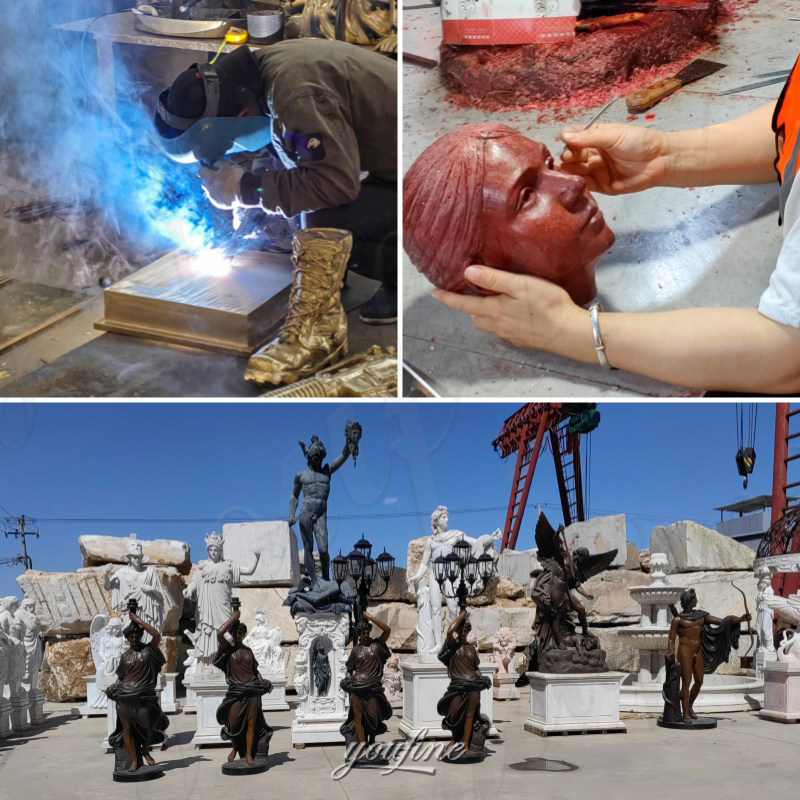
Summary
If you are at the stage of moving from “considering”to “selecting,” treat this guide as your baseline:
start with proportion, control the materials, respect the environment, and partner with a supplier who understands not only how to make a sculpture, but how to make it work in a real outdoor space.
A Mid-Century modern sculpture is not a purchase – it is a decision that shapes how your garden will feel for the next decade. Choose carefully, and let it stay quietly right.



